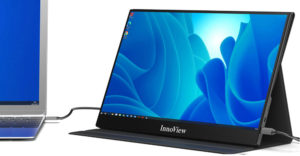
Now that NASA has entered the virtual world with its two islands in Second Life, public outreach, collaboration and space exploration may never be the same again.
On its CoLab Island, outreach and collaboration are the focus, as Part 1 of this two-part feature explains.
Its other island, called “Explorer Island,” focuses on the engineering and science-visualization side of space exploration.
Design by Avatar
“In the ’80s and ’90s, I was one of many people who took the T-square away from drafting tables and handed drafters a mouse instead,” Charles White, subject matter expert for virtual world technologies with NASA’s Jet Propulsion Laboratory (JPL), which manages Explorer Island, told LinuxInsider. “Now I see us taking away the mouse and handing over an avatar instead.”
Indeed, participants in Explorer Island have created models of a variety of space phenomena, including an area like Mars, complete with a Lander model, available for public viewing from a nearby stadium.
Not surprisingly, the island’s grandstand was full to capacity with avatars last Sunday as space exploration enthusiasts gathered to watch the Mars Odyssey/Phoenix Lander reach Mars and prepare for the deployment and landing of the Phoenix Lander.
Scale Model, Real Data
One of the group’s most notable achievements so far has been to develop a scale model of the Victoria Crater on Mars, including a real representation of the Mars Exploration Rover, Opportunity, perched at the edge of it.
“Now you can actually take your avatar, unfold a picnic table and sit there just like at the Grand Canyon,” said White, who is known as “Jet Burns” in Second Life.
The model is more than just a novelty, however; in fact, “the historic first is that it’s based on real science data from the Mars Reconnaissance Orbiter, including real photo and elevation data,” he said.
Open Source Tech
The digital elevation map that was provided for the project indicated that the real crater is about half a mile wide at the mouth, while its depth is estimated to be about 230 feet. Working with that data, a NASA intern created a model in Second Life that is a 1:3.5 rendition of the crater.
Creating the model meant slicing the digital elevation model and visual texture into 625 mosaic pieces, which were then run through an in-house script that mapped them to a sculpted plane.
A normalization and shifting script then went through each tile and performed some adjustments. All the textures were then batch-imported into Second Life through a modified open source client, and the asset ID strings were assembled into a text file.
The xyz data and the texture asset IDs were imported into a Second Life notecard, and a custom builderbot was then used to interpret the data and assemble the crater pieces in sequence.
‘Holodeck’ Aspirations
“The model provides a sense of being there in a way that looking at an image doesn’t,” Andrew Hoppin, communities liaison for CoLab at NASA Ames, told LinuxInsider. “You can even walk around it with a scientist who is actually working on that mission.”
The results are “not at the resolution we’d like yet, nor is it refreshed rapidly to reflect new data,” noted Hoppin, who is known as “Drew Frobozz” in Second Life. “Our goals going forward include the ability to have it more like a holodeck.”
Created by the Public
Only a few of the models on the island are built by NASA personnel, White noted — “everything else was created by the public, interacting with us.”
White hopes that ultimately such models can be used to focus real-life human exploration efforts on areas that have already been investigated and found to be promising in the virtual world.
“One of the things I try to promote is the idea of sending a robotic probe specifically designed for high-resolution pictures and 3-D, then scanning the data, digitizing it for the virtual world, and allowing avatars to walk through the canyons,” he explained. “If that reveals someplace interesting, then we can send humans there.”
Indeed, ultimately, “most of us will explore the solar system in that manner — as an avatar — because it’s so expensive and so dangerous to do it for real,” Hoppin agreed.
All About Hardware
Of course, there may be limits to how much can be accomplished in a virtual world.
“It’s all fascinating and intellectually intriguing, but what gets you into space is hardware, and there’s no way to evaluate hardware in a virtual environment,” Paul Czysz, professor emeritus of aerospace engineering at St. Louis University, told LinuxInsider.
“Will a valve really work? What happens if you impact an asteroid? You can simulate things like that, but you don’t have any knowledge of the actual operation of the equipment,” Czysz added. “A lot of things can cause valves and switches and things like that to fail.”
In other words, “if you’re gonna fly something in space, you can’t fly inside an avatar,” he said. “You’ve got to actually be there.”
Real Communication
JPL’s White, however, is not so sure.
“Critics may say this is not a real world, and it’s true that the world isn’t,” he explained. “But the communication is and the visualization is, and that’s what it’s really about.”
Inclusiveness is another compelling benefit, White added.
“We don’t exclude,” he explained. “That’s what I love — it’s more than gee-whiz, it’s inclusive. From the 16-year-old mall rat to the geologist, both can experience the data and the information.”
And what, so to speak, does that have to do with the price of oil?
“Maybe a lot,” White asserted. Any given exploration could provide clues about new energy sources, for example, and “who knows who will discover it? Sometimes people can contribute a whole new idea even with an off-comment.”
‘We Cannot Uninvent This’
One of the strengths of the virtual world is that it fosters creativity, thanks in part to the fact that it is not limited by reality, he added.
“We cannot uninvent this,” White said. “Basically, it’s like the Kitty Hawk. When the Wright brothers first flew it, there were probably critics on the beach saying, ‘you’ll never cross the ocean in that thing.’ If they had taken that to heart, we wouldn’t have 747s today.
“I’m getting the same people on the beach saying, ‘Those virtual worlds are silly, you’ll never get across the Atlantic,” he added. “Well guess what? We’ve already held conferences that span the world. In the next phase we’ll go from the Kitty Hawk to a biplane to a monoplane to a jet to a space shuttle.”
In short, “this idea is going to carry,” White asserted. “You can take the Wright brothers down, but there’s going to be 747s.”




















































